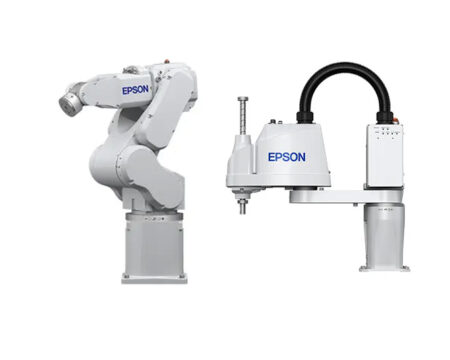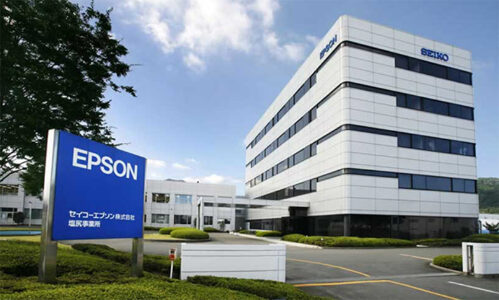EPSON Robots primary products are both SCARA (4 axis) robots and Standard Articulating (6 axis) robots. They have over 350 models of SCARA robots from small reach and payload/high accuracy models like the 3-micron repeatable G1 robot, up to the 2OKG payload, 1000mm reach G20. The 6 axis robots are 4, 8 and 12 kg up to 1.4 meters reach. EPSON has some unique robot models in the industry including the VT6L economical 6 axis robot and the N series vertical folding arm 6 axis. EPSON also has long believed in programming robots with software, their RC+ software is easy to learn and makes connectivity to other integrated systems much easier. Every year they add more integrated options available to use with their robots and software including, their CV2 robot vision guidance, Intelli-flex -flex feeder, force guidance, Cobot safety scanner interface. EPSON robots are an excellent choice for ease of use in robotics, mixing of SCARA and 6 axis types and the benefits of a working with a progressive company who is always coming out with new latest robotics products and integrated options.

EPSON Robotics is a division of the $10B Seiko EPSON Corporation headquartered in Suwa Nagano Japan. The EPSON robotics division headquarters in the USA is located in Los Alamitos CA. they also have a support facility in Indianapolis IN. EPSON began in robotics developing a SCARA robot as means of assembly for their own Seiko watch manufacturing. Now, nearly 40 years since then, EPSON has become a well-known brand in the robotics industry specializing in robotics applications where high speed and accuracy are required. Recently, EPSON has been adding products with greater reach, payload, and economy as well as more integrated options such as vision guidance, force guidance, flex feeding, and co-bot safety scanner interfaces. EPSON robot products are very easy to use and based on the highly evolved software programming. They offer a wide product range in robot sizes, duty cycles, and price ranges as well as integrated options.

Speak to one of our experts today!